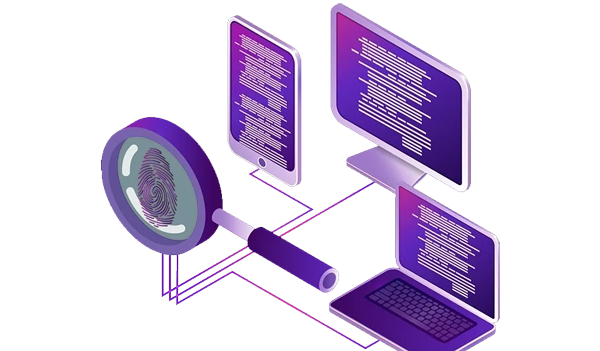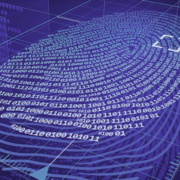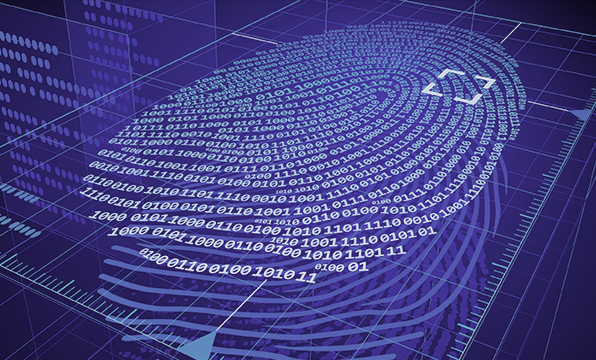Forensic Data Analysis & Services
Smart Data Forensics. Implementable Intelligence Secure, relevant data creates an unlimited amount of company value.

Make Data Forensics Your Biggest Asset. Detecting Fraudulent Activity. Unlock Continuous Business Improvement.
Mitigating risks, handling crises, accelerating growth strategies, optimising emerging business opportunities, and competing effectively are high-time demands for creating valuable business insights alongside increase the effectiveness of operational processes from available data sources. Even though data experts provide an abundance of domain knowledge, agility, and responsiveness, they struggle to achieve consistency, repeatability, and scalability across data sources. An agile, resilient forensic data analysis is critical to today’s business aftereffect while generating measurable economic benefits.
Forensics Data Analysis with CWDT: Enable Data-empowered Intelligent Forensic Investigation
Handling complicated data is time-consuming and resource-intensive. Assist firms in analysing huge amounts of data to identify high-risk financial linkages and activities, execute assessments promptly, and implement processes to decrease risks and enhance internal controls proactively.
CWDT forensic data analysis service focuses on revealing fraudulent activity patterns inside data while maintaining data integrity. Our advisory services offer a comprehensive approach based on each vertical’s specifics along with extensive operational expertise to identify new business markets and better growth opportunities. We enable organisations to extend additional business advantages such as predicting potential misconduct or fraudulent behaviour, advancing business transparency, and boosting operational efficiency. Protect current databases and persistent data with powerful security software, preserve volatile data and digital evidence or footprints, and recover lost data from PCs, storage systems, mobile devices, and more. professionals reverse engineering methods legal entities technical steps.
Advantages of Employing Data Forensics in Your: Preventing Information Theft and Much More
Preventing Hackers and Malware
The study of forensic data aids companies in developing measures to prevent hackers from gaining access to a network or device. Understanding patterns of how hackers steal or abuse structured data, companies may safeguard pertinent data and check networks, or devices to guarantee that outside parties cannot access it.
Identifying Vulnerabilities
Exploiting vulnerabilities is generally simpler. Techniques for forensic data analysis provide valuable information regarding vulnerabilities in infrastructure, applications, and websites. On the basis of this knowledge, security specialists strive to patch these weak spots.
Recovery of Deleted Information
For a severe data breach or identity theft, it is essential to restore erased data. Complex tools and techniques are used in forensic data analysis to retrieve information and present it in court or in situations where data recovery is essential.
Monitor Trends
Forensic data analysis provides a comprehensive review of trends based on historical and current data, enabling organisations to identify improvement areas/scope. With this information, forensic specialists may concentrate on weak spots within the company while analysing whether possibly fraudulent conduct is happening.
Assess and Improve Internal Controls
Using forensic data analysis, firms may assess the effectiveness of their internal controls by reviewing financial transactions. Using aberrant data patterns, possible vulnerabilities may be identified, allowing firms to bolster internal controls and proactively limit fraud risks.
Revise and Strengthen Policy
The outputs of forensic data analysis may be used to perceive, construct, or revise policies. These outcomes assist organisations in identifying specific areas in which employees require additional training and knowledge.
Enhanced Productivity and Efficiency
Internal audits and investigations use forensic data analysis to analyse enormous amounts of data. This enables forensic investigators to perform more difficult tests utilising technology that also eliminates human mistakes. Forensic data analysis helps firms to investigate larger transactional data at a time than data sampling solely. It helps decrease sampling mistakes and enhances the likelihood of accurately finding abnormalities.



Forensic Data Analysis
Mapping Forensic Data Analysis
Step 1: Procedure and policy development
Step 2: Evidence Evaluation
Step 3: Acquiring the Evidences
Step 4: Examining the Evidences
Step 5: Documenting and Reporting
CDWT Full-scale Forensics: Services for Data Analysis and Data Management
- Data Consulting
- Data Modernization
- Data OPS
- Data Engineering
- Advanced Analysis and AI (Artificial Intelligence)
Using data forensics and forensic analysis, one may gain a competitive edge, enhance operational efficiency, and innovate.
Utilize design-driven data and analysis consulting services to create well-informed judgments while fostering scalability and unmatched continuity.
Data consulting services like Data Maturity Assessment, Data Strategy Blueprinting and Roadmap, TCO optimization for Data Analysis & AI Adoption, and Industry-specific data consulting services are available.
Eliminate Traditional Data Warehouse methods and procedures, data silos, system inefficiencies, restricted data analysis, security and compliance concerns, and more.
Adopt SAP, on-premise data to Data Lake migrations, and Traditional Data warehouse to on-cloud data migrations.
Obtain ongoing assistance and management for data pipelines after the development and configuration of Data-related use cases, such as Infrastructure, Application (ETL and transformation code), and the Database.
Obtain managed services driven by AIOps, operational tuning and automations, data platform security management, as well as support resolution and a specified SLA for managed analysis.
Concentrate on the practical applications of data gathering, processing, and analysis to develop insights and resolve important use cases for immediate effect. Utilize several services, such as data discovery and ingestion, data lakes, data warehouses, visualisation, reporting, and dashboards.
Using AI, ML, and Deep Learning Capabilities, integrate smart, in-depth analysis throughout business processes.
Using cutting-edge intelligence analysis, modernise and enhance corporate strategy, service delivery, operations, customer management, supply chain management, and monitoring.
- Data Security, Governance, and Compliance
- Multi-ecosystem Database Managed Services
- Data Threat Management, backed by AI/ML
- Senior Vice President – Global Alliances & India Business Head
- Data Lake Activation, Preparation and Visualization
Secure static and dynamic dataflows and monitor, analyse, and safeguard databases, data centres, and dataflows across the IT stack.
Utilize comprehensive threat hunting, remediation capabilities, and sophisticated threat intelligence with intelligent cybersecurity solutions.
Implement a rigorous data governance structure and guarantee compliance with local, national, and international legislation and standards.
Obtain completely managed database capabilities in the cloud, easily integrated with many ecosystems. Using AIOps-powered services, provide a strong architecture based on business requirements and completely controlled data functionality.
Identify any possible dangers or weaknesses, implement remedial steps, and fortify the system.
Utilize security-native technologies for cloud platforms and third-party apps to fight anticipated and unanticipated cyberattacks.
Implement sophisticated business intelligence across data pools, data lakes, and databases in order to create insightful operational insights.
Integrate cloud-native tools and technologies to allow real-time processing of data and development of insights.
Bring predictive ability and in-depth analysis to your organisation in order to maintain a competitive advantage in data processing, visualisation, and presentation.
Utilize data insights derived from a single source of truth, such as Data Lakes, Data Warehouses that provide visualisation dashboards, and the capacity to analyse data on the go.
Utilizing real-time monitoring and visual investigation, dashboards that are user-friendly and interactive enable intelligent decision-making.



Forensic Data Analysis
Why Avail CDWT Forensic
Data Analysis or Services for Data Forensics?
Detailed domain-specific evaluation, consultation, and assistance to combine cutting-edge analytical methods with data modelling and designing.
Data Archiving in accordance with industry standards for automated, effective data profiling and cleaning.
Ensure a universal data architecture by streamlining data collection, processing, and analysis from diverse sources and IT ecosystems.
Utilize Big Data solutions to discover processes, techniques, and systems that are resource- and cost-intensive. Reduce total business costs by eliminating inefficiencies and boosting productivity.
End-to-end data intake and administration across all cloud environments. Implement cloud-native data analysis and enhanced automation to improve core business operations and results.
Gain real-time insight into all company operations, systems, processes, workflows, apps, and performance through analytical dashboards and intelligent reporting.
Real-time monitoring and management of infrastructure health to avoid unforeseen outages and catastrophes.
Defined data engineering, data modernisation, data operations project management, and tool interfaces using adaptable ETL tools and services.
Effortless AI and data governance - compliance with local, national, and industry standards, and the use of the most recent techniques.
To install powerful forensic data analysis services, seamlessly address all infrastructure-networks and platform. Utilize pre-built models and libraries to deploy AI on-premises, in remote ecosystems, and at the edge of the network.
With 360-degree data analysis and forensics, you can achieve uncompromised security, continuous continuity, and unstoppable development.
Why Should Your Organization Partner with CDWT for Cybersecurity Transformation?
The biggest application-centric managed service provider in the world, providing specialised Managed Security Services and AI-driven advanced Managed Detection and Response Services.
12+ years of experience, 4000 transformation tales in 26 countries, and 25+ Centers of Excellence.
80000 EPS, 13000 HBSS, 3200 UTMs, 7 Reg-tech Frameworks, and more than 40 Security Controls.
Plus over two thousand cloud specialists with industry-leading certifications, including Hyperscaler Security, Hyperscaler Platform, CISSP, OSCP, CEH, CHFI, and Comp TIA Security.
Integration of intelligent automation-powered, proprietary cybersecurity products, such as the CDWT Self-Healing Operations Platform.
Expertise in compliance management assuring severe, flawless governance and adherence to local, national, and international legislation.
Advanced threat detection, proactive threat hunting, and best-in-class tools and procedures.
24/7 automated threat management and response.
Comprehensive Threat Investigation and Verification using cutting-edge Threat Intelligence powered by industry-leading platforms such as Microsoft, OSINT, STIX&TAXI, etc. and CDWT Threat experts.
Cloud-native security with multi-cloud compatibility for the most popular cloud platforms, including AWS, Azure, GCP, Oracle, and IBM Cloud.
Expertise in building and administering comprehensive SIEM on AWS Cloud - assisting organisations in proactively assessing vulnerabilities and automating and accelerating incident response on AWS Cloud.
Forensic Data Analysis – FAQ’s
* Improving business risk evaluation
* Increasing fraud detection via improved training and awareness
* Enhancing the identification of fraud and risk in massive data sets
* More adaptable and sensitive to fraud investigation
Data extracted from physical devices such as hard discs, memory sticks, and CDs are the subject of forensic data analysis. It checks the format of'structured data' on a storage medium configured for a certain operating system.




